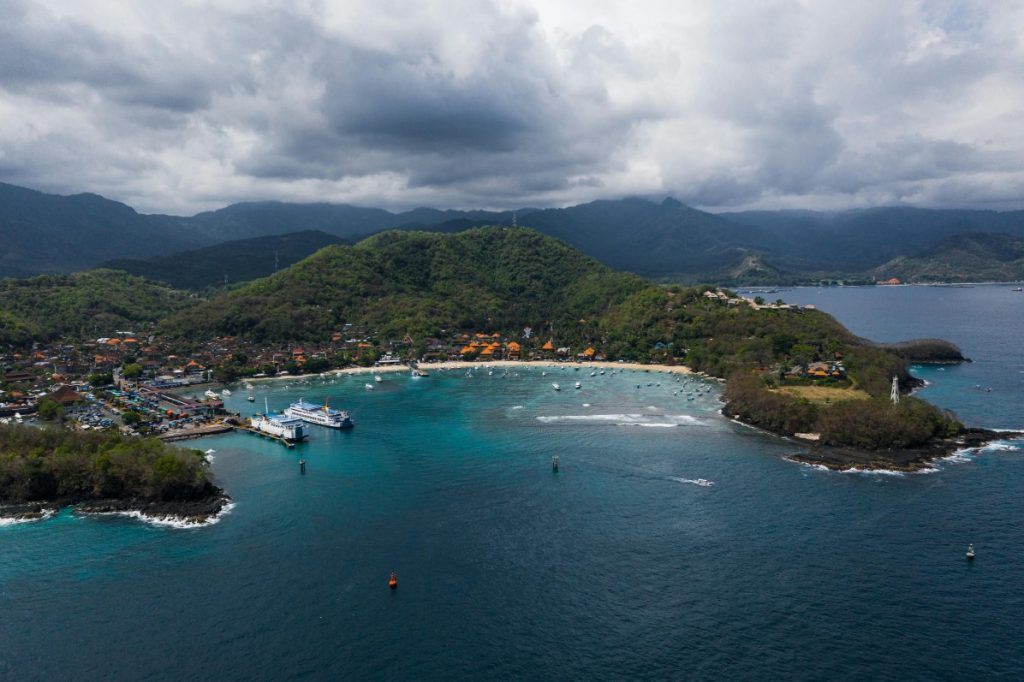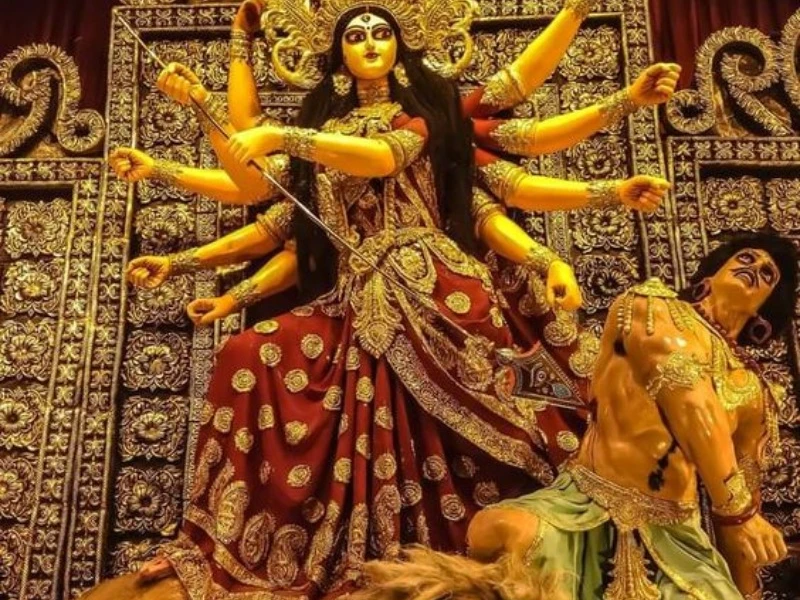Women’s Solo Travel: 15 Safety & Empowering Tips

As a woman, deciding to travel alone is one of the most powerful things you can do. It’s a journey of freedom, independence, and finding yourself. Almost two-thirds of travellers today are women, which makes the world easier to get around than ever. But it’s perfectly normal to be a little nervous. It’s normal to have questions like “Is it safe?” or “Can I really do this alone?” when you’re thinking about going to a place as beautiful and complicated as Kashmir. Don’t be afraid! Being prepared doesn’t mean being reckless when you travel alone. If you plan ahead and have the right attitude, you can travel almost anywhere in the world with ease and happiness. You can have the empowering, life-changing experience you’ve always wanted on your own trip. This is the best guide you can find, full of useful tips and tricks to make you feel ready and confident for your trip. We’ll talk about everything from how to pack smartly and stay safe to how to enjoy the amazing freedom of being alone. These tips will help you get the most out of your adventure, no matter how experienced you are. Let’s get going! Part 1: The Foundation—Planning and Getting Ready (Before You Leave) Before you leave, there are a lot of things you need to do to make sure your solo trip goes well. The key to confidence is being well-prepared. 1. Learn how to do research well Credit: pexel.com Knowledge is the most important thing you can have before you go anywhere, especially to a place with a unique culture like Kashmir. Doing research on your destination will help you avoid common mistakes, show respect for the local culture, and learn more about it. What to Look Into: Customs and Culture: Find out about the rules of behaviour, dress codes, and social norms in your area. In many parts of India, for instance, it is polite to eat with your right hand. Neighbourhoods that are safe: Find the best and safest places to stay in each city. Check out the reviews and look at a map to see how central the areas are. Some common scams are: A quick search for “tourist scams in [your destination]” can help you avoid a lot of problems. Know about them so you can spot and stay away from them. What’s going on now: If you’re going to places like Kashmir, it’s important to keep an eye on the news and any travel warnings. Pro Tip: Don’t just use general travel guides. Read new blogs and watch YouTube vlogs by other women who travel alone. Their firsthand accounts and useful tips are very helpful. 2. Make a smart and flexible schedule Credit: pexel.com A plan gives you structure and security, but you need to be able to change it if you need to. What to Plan: Book Your First Night: You should always book your first night in a new city. This takes away the stress of having to find a place to stay after a long trip. Plan out your days: You should have a general idea of what you want to do and see each day, but don’t plan too much. Make sure you have time for unexpected adventures! Getting around: Find out how to get from one place to another. It’s important to book trains in India ahead of time. Pro Tip: Make sure you have both a digital and a paper copy of your itinerary. Give a trusted friend or family member back home the digital version so they know where you are most of the time. 3. Don’t pack too much Credit: pexel.com Packing for a trip alone is a tricky business. You should be ready for a lot of different things, but you also want to be able to carry your bags comfortably by yourself. The Basics: The Right Bag: A rucksack that is comfortable and long-lasting is often easier to carry than a suitcase, especially on bumpy streets or crowded trains. Layered Clothing: Bring clothes you can wear in layers so you can adjust to changing temperatures. A big scarf or sarong is a must-have for any woman travelling alone. You can use it as a head covering when you go to religious sites, as a shawl to cover up, as a beach towel, or as a blanket. A basic first aid kit should have pain relievers, band-aids, antiseptic wipes, and any medications you take. A doorstop for extra security in hotel rooms, a personal safety alarm, and a small padlock are all safety items. Pro Tip: Use packing cubes to keep your bag neat and to squeeze your clothes down. This will save you a lot of room and let you find what you need without having to unpack everything. 4. Organise Your Money and Papers Credit: pexel.com Having a smart money plan and keeping your important papers in order can help you avoid a lot of stress. Papers: You should make at least two copies of your passport, visa, and insurance papers. Put them somewhere else than the originals. Store digital copies in your email and in a safe cloud storage service like Google Drive or Dropbox. Cash: Change things up: Don’t ever depend on just one source of money. Bring both cash and at least two different debit or credit cards. Tell Your Bank: Tell your bank about your travel plans so they don’t block your cards for strange activity. Cash in an emergency: Put some extra cash, like $100 USD, in a separate bag from your main wallet in case of an emergency. Pro Tip: To keep your cash and cards safe, especially in crowded places, use a money belt or a hidden wallet that you can wear under your clothes. 5. Tell people and connect Credit: pexel.com It is important for your peace of mind and the peace of mind of your loved ones back home to stay in touch. What to Do: Tell Others About
8 Best North Goa Hotels with Private Beaches for a Unique

A trip to Goa is magical in its own way, but it can be hard to find a quiet spot on its sunny beaches. North Goa is a popular place for tourists because of its lively atmosphere, well-known markets, and famous nightlife. But what if you want both the thrill of the north and the calm luxury of a private beach? The dream is to leave your room and walk onto a beautiful beach that is only for you. In India, it’s hard to find a truly “private” beach. But a few great hotels offer the next best thing: private, direct access to quiet, secluded parts of North Goa’s famous coastline. These resorts are the perfect place to relax, unwind, and enjoy the sun and sea in peace. Are you looking for the perfect mix of location, luxury, and privacy? We did the work for you. Forget about the long search and reviews that never end. This carefully chosen list includes the best North Goa hotels with private beach access, chosen for every budget and type of traveller. Your perfect beachfront getaway is waiting for you, whether you want a 5-star convention centre or a stylish bungalow by the sea. A Quick Note About Goa’s “Private Beaches” You should know that Indian law says that all beaches are public property. So, no hotel can own a beach. When hotels say they have a “private beach,” they usually mean one of two things: Access to Private: There is a private path from the hotel to a public beach, which is usually a quieter, more private area. Roped-off Area: The hotel has a private area on the beach just for its guests, with sunbeds, umbrellas, and staff to help them. This guide lists hotels that offer this amazing level of exclusive access, so you can have the private beach experience you’ve always wanted. The Best 8 Hotels in North Goa with Their Own Beaches 1. Hotel Hill Rock, Goa Credit: justdial.com Best For: Get Away from It All on a Quiet Hilltop. Location: Near Tiracol River, Querim Hotel Hill Rock is the perfect place to get away from it all if you want real peace and quiet. This beautiful retreat resort is on top of a hill and has stunning views of the Tiracol River and the Arabian Sea. The peaceful and natural setting will help you forget about the stress of living in the city. Why We Love It: The atmosphere is calm and intimate because there are only 18 well-appointed rooms. There are hammocks all over the lush lawns, which are great for a nap in the afternoon with the sound of the ocean in the background. The two beautiful pools are great places to cool off and look out at the ocean. The Beach Experience: The resort has a private beach at the base of the property. It’s a quiet stretch of sand where you can watch the sunset in peace or see a sky full of stars at night. Price Range: ₹2,200 per night 2. The Ivy Anjuna Credit: ivyanjuna.com/gallery-page Best for: A stylish and modern boutique vacation. Anjuna is where it is. The Ivy Anjuna is the best place for a modern traveller who wants style and privacy. This boutique hotel is a stylish oasis in the middle of lively Anjuna. Its sleek, modern design and classy atmosphere make it stand out. It’s great for couples and people travelling alone who want to relax and pamper themselves. Why We Like It: The rooms are beautifully designed, with modern furniture and small touches of traditional Indian style. The property offers a fantastic range of amenities, including a world-class spa for pampering and a well-equipped fitness centre. There are many places to eat on-site, so everyone can find something they like, from local Goan dishes to food from around the world. The Beach Experience: The hotel’s private beach area is the best part. It’s a beautiful, well-kept, and private place where you can get some sun, take in the amazing views, and feel like you’re far away from the crowds in Anjuna. Cost: About ₹6,500 per night 3. Beach Beauty (Beleza By The Beach) Credit: belezagoa.com Best for: A Quiet South Goa Vibe (Honourable Mention) Colva, South Goa We had to give an honourable mention to Beleza By The Beach, even though our main focus is on North Goa. This is because it is often recommended for its amazing private beach experience. Please be aware that this resort is in South Goa. It’s great for people who want to see both parts of Goa. Why We Like It: It’s a private getaway on the quiet, clean sands of Colva Beach. The property has a lovely outdoor pool, spa, and sauna that are perfect for relaxing. Two restaurants on the property serve a wide range of tasty international dishes. The Beach Experience: The hotel has direct access to a clean, private stretch of Colva beach, which is a great place to get away from the same old things. Price Range: ₹8,437 per night 4. Taj Resort & Convention Centre in Goa Credit: www.tajhotels.com Best for: The most luxurious 5-star stays and big events. Where: Vainguinim Beach, close to Panjim. This five-star hotel is a world unto itself, with beautiful architecture and legendary Taj service. As soon as you walk into the fancy lobby, you are surrounded by luxury. The resort is on a cliff, which gives guests stunning views of the Arabian Sea from all sides. Why We Like It: The suites are huge and have beautiful decor, with living rooms that have sparkling chandeliers. The raised deck with the beautiful infinity pool is the best place to see the sunset. The Jiva Spa has treatments that will make you feel better and help you relax after a day of exploring. The Beach Experience: The hotel gives guests direct, private access to the calm and peaceful Vainguinim Beach. It’s a quiet, clean stretch of sand that’s away from the
Explore Bali Beyond Ubud: Hidden Beaches & Villages

Most people visiting Bali will think of rice terraces and yoga retreats in Ubud, but the island’s true beauty is often found away from the common hotspots. Bali offers hidden beaches, traditional villages, waterfalls, and adventure trails, which underpin a cultural, nature, and local life-filled Bali adventure for all visitors to experience. Utilize a Bali travel planner or Bali trip planner to help ensure that you discover Bali’s hidden gems efficiently and in a meaningful way. Offbeat Beaches Canggu Bali: Surf, yoga, and sunset vibes! With hip cafes, smoothie bowls, and live music, Canggu is perfect for Bali solo travel or couples. Sanur Bali: Calm, family-friendly, and perfect for traveling the beachfront by bike. It is also the gateway to see Nusa Lembongan and Nusa Penida for an island getaway. Nusa Dua Bali: Home to luxury resorts, white sand beaches, and cultural experiences such as Museum Pasifika, Nusa Dua is perfect for Bali honeymoon packages all inclusive. Jimbaran Bali: Known for its sunset seafood dinners on the beach, Jimbaran is a must-visit for couples and families traveling together. Hidden Villages & Cultural Escapes Sidemen Village: Surrounded by stunning rice fields and offers weaving workshops and homestays. This is the perfect destination for the Bali honeymoon itinerary and provides a peaceful and authentic experience. Penglipuran Village: Regarded as one of the cleanest villages in Bali and continues to maintain its traditional architecture and local traditions. Tabanan & Jatiluwih Rice Terraces: UNESCO-recognized rice terraces that are perfect for an early morning walk, taking photos, and engaging with local culture. Adventure Trails Mount Batur Trek: Trekking to the summit of Mount Batur for sunrise views over the lake and volcano. Moderate difficulty; guided treks recommended. Rice Terraces and the Tegallalang: Walk paths to see the rice terraces or just be present to see produce agriculture and interact with farmers doing traditional irrigation. Waterfalls: Tegenungan (easy access), Tukad Cepung (different – hidden cave), Sekumpul (remote jungle). Wellness & Yoga Retreats Ubud Outskirts: Forest sanctuaries for meditation, healing, and spiritual connection. Canggu: Surf-friendly yoga studios and morning beach sessions. North Bali: Less touristy, perfect for detox, wellness, and mindful relaxation. Where to Stay Budget: Homestays located in Sidemen or Sanur to experience authentic local life. Mid-range: Boutique villas in Canggu or Seminyak to provide comfort and cultural experience. Luxury: Spa resorts located in Uluwatu, Nusa Dua, or Jimbaran for Bali honeymoon packages with everything included. The Tarzan Way offers curated stays connecting you to culture, hidden gems, and immersive adventures. Bali Nightlife & Food Scenes Seminyak: Upscale beach clubs and live music. Pair with spa or cycling tours. Canggu: Night markets, cafés, and acoustic music venues for solo travelers and digital nomads. Jimbaran & Sanur: Sunset dining and relaxed evenings. Local flavors include Nasi Campur, Lawar, Bebek Betutu, and Sate Lilit, best explored through food tours. Suggested 7–10 Day Bali Itinerary Day 1–3: Ubud, Sidemen, Mount Batur sunrise trek, Tegallalang rice terraces. Day 4–5: Canggu, Seminyak, Uluwatu, Jimbaran beach. Day 6–7: Nusa Dua, waterfalls, Sanur, optional island hopping. Optional Days 8–10: Tabanan exploration, workshops, spa retreats, and shopping. Check Complete Bali Itinerary (5, 7, 10 Days) for details. Best Time to Visit Bali April–June: Dry season, ideal for beaches and waterfalls. July–September: Peak season, festivals, and nightlife. October–March: Rainy season, perfect for wellness and spa retreats. Travel Tips Use scooters or local drivers for navigating the area. Remember to bring small bills in IDR for local shopping. Lightweight clothing, swimwear, hiking shoes, and yoga clothes are recommended. Dress modestly at temples and observe local customs. Bali is a rich tapestry of beaches, villages, waterfalls, and temples. Slow down, discover hidden paths, and participate in local life. With experiences curated for you from The Tarzan Way, let your Bali trip be a blend of adventure, culture, wellness, and romance. Begin your hidden Bali adventure today! Ready to dive deeper? Scroll down to explore the complete Bali travel guide and uncover every hidden beach, village, and local experience waiting beyond Ubud. Beyond Ubud – The Real Bali Begins Here When most people think of Bali, they think of Ubud – rice terraces, yoga, and a spiritual sense of calm. For Mira and Karan, who first traveled to Ubud on their honeymoon, Bali was full of secrets that went beyond the obvious postcards. On their second day in Ubud, they left the busy streets and went off the beaten path. They drove before the sun had finished rising over the horizon as they crossed emerald rice paddies, small rivers glistening in the sunlight, and tiny villages watching time pass without visitors. This was the other side of Bali; an island full of stories, traditions, and landscapes that many visitors never see. Bali is not just a group of resorts and temples, it is a living mosaic of experiences waiting to be discovered. If you want to plan a trip like Mira and Karan did in Bali, use a Bali travel planner or Bali itinerary planner. A properly organized Bali itinerary will give you time to visit hidden beaches, ancient villages, and adventure trails, while also capturing the true magic of the island. For first-time visitors, the Bali Travel Guide 2025 – The Ultimate Planner for Your Dream Trip provides detailed tips on transport, cultural etiquette, and must-visit spots. The Allure of Hidden Bali There exists a Bali beyond Ubud, and the busy streets that accompany most tourist centers. This is a Bali where mornings are spent smelling frangipani, witnessing locals work in rice paddies, and fishermen throwing their nets in a quiet cove. Visiting some remote corners of the island can give you: Quiet beaches like Balangan or Bingin, where the ocean seems endless. Authentic villages preserving centuries-old crafts and customs. Adventure trails ranging from volcano treks to jungle waterfalls. Wellness escapes tucked away in quiet corners, perfect for solo travelers or honeymooners. When you plan with a Bali vacation planner or tour packages to Bali, you can create a travel balance of adventure, culture, and relaxing
10 Great Places in India to Celebrate Navratri That Will Stay with You

India is a very diverse country, and its festivals show this better than anything else. During these times, the country is full of colour, energy, and devotion. Navratri is a nine-night, ten-day carnival of faith and fun that goes on all over the country. It brings people together in a colourful display of culture. The name “Navratri” means “nine nights,” and the festival is about the triumph of good over evil. It honours the defeat of the demon Mahishasura by Goddess Durga in most of India. In some places, it marks the victory of Lord Ram over the demon king Ravana and his return to Ayodhya. The stories may be different, but they all have the same spirit: a celebration of hope, positivity, and the power of the divine. Travelling during Navratri is the best way to really get to know the heart of India. Each part of the country has its own way to celebrate this great festival. In the south, there are big parades; in the west, there are lively folk dances; and in the east, there are elaborate idol worship. “Here is a list of the 10 best places in India to celebrate Navratri to help you plan your holiday trip.” 1. Kolkata, West Bengal: The Big Show of Durga Puja A picture from Pinterest Durga Puja is the biggest and most important festival of the year in West Bengal. It is also known as Navratri. Kolkata becomes a huge open-air art gallery, with thousands of beautiful temporary temples called pandals. The energy, creativity, and dedication on display are just amazing. Why You Should Go to Navratri The main thing to do at Pandal Hopping is to look around the creative and artistic pandals. The themes of each one are different, from old-fashioned to modern. Witness the incredible skill of the artisans who make the beautiful clay idols of Goddess Durga. Sindoor Khela: On the last day (Vijayadashami), married women play with red vermilion powder and smear it on each other as a sign of a happy married life before the idol is taken for immersion. Food that tastes great: The streets are full of food stalls selling the best Bengali dishes, from street food like puchkas to traditional sweets like sandesh. Pro Tip The Kalighat Kali Temple and the Belur Math are two of the best temples to visit. The Kolkata Metro is the best way to go pandal hopping because it runs late into the night during Puja. It helps you stay away from the huge traffic jams on the roads. 2. Ahmedabad and Vadodara, Gujarat: The Land of Garba and Dandiya A picture from travel site India. People all over the world know about Navratri, a nine-night dance festival in Gujarat. The sounds of folk music and the sight of thousands of people in colourful traditional clothes dancing all night long bring the whole state to life. Garba and Dandiya Raas are the two most common types of dance. Why You Should Go to Navratri Energetic Garba Nights: Feel the amazing energy of thousands of people dancing in perfect circles around a lamp or picture of the Goddess. Traditional clothes are very colourful. You can see men and women wearing beautiful traditional clothes like chaniya choli for women and kediyu for men. The Garbo is a decorated earthenware pot with a lamp inside that stands for the womb and the source of life. Vadodara is famous for having some of the biggest Garba events in the world. One event even got into the Limca Book of Records because it had more than 40,000 dancers. Pro Tip Khodiyar Mandir (Bhavnagar) and Chamunda Mata Mandir (Chotila) are the best places to celebrate. You don’t have to be a professional dancer to join in, which is a pro tip. It’s easy to learn the basic steps of Garba. Just do what the locals do. The happy mood makes everyone feel welcome. 3. Varanasi, Uttar Pradesh: A Celebration of Religion and Theatre A picture from Pinterest Navratri is a very spiritual and traditional event in the holy city of Varanasi. The celebrations are known for putting on Ramlila, a play that reenacts the life of Lord Ram from the epic Ramayana. People put on these plays on stages in lanes and parks all over the city. Why You Should Go to Navratri Ramlila Shows: Seeing a live Ramlila performance, especially the one near Ramnagar Fort, is a unique cultural experience that has been going on for hundreds of years. Akhand Jyoti: As a sign of hope, many homes and temples light a “Akhand Jyoti,” which is a lamp that stays lit for all nine days. Spiritual Atmosphere: At this time, the ghats of the River Ganga have a special spiritual energy, and prayers and devotional music fill the air. Pro Tip Best Temples to Visit: Kanaka Durga Mandir, Annapurna Devi Mandir. One good piece of advice is to go for a boat ride on the Ganga at night. You can see the lit-up ghats and the parties along the riverbank very well from here. 4. Bastar, Chhattisgarh: A One-of-a-Kind Tribal Dussehra A picture from Pinterest The way people in the Bastar region of Chhattisgarh celebrate Navratri and Dussehra is very different from how people in other parts of India celebrate it. It lasts for 75 days, which makes it one of the longest festivals in the world! It is a tribal festival that honours the goddess Danteshwari, who is the goddess of the area. Why You Should Go to Navratri A Special Tribal Custom: This festival doesn’t have anything to do with Ram or Durga. It’s a celebration of nature, spirituality, and tribal culture. The Procession of the Chariot: Witness ancient rituals where deities from surrounding villages are carried on a massive wooden chariot, pulled by hundreds of people. It’s a real, raw, and non-commercialised festival that gives you a deep look into the old ways of life in India’s tribal communities. Pro Tip The best temples
Beyond Trick-or-Treat: 7 Fascinating Indian Festivals Like Halloween You Should Know About

As the end of October gets closer, people all over the world are getting excited for Halloween. On October 31st, people dress up in scary costumes, go trick-or-treating, and carve pumpkins. This is the night when the line between our world and the spirit world is said to be the thinnest. Modern Halloween, which has an American cultural twist, is slowly becoming popular in India’s big cities. However, many people don’t know that India has its own old and very important festivals that have similar themes. For hundreds of years, different groups of people in India have performed rituals to honour the dead, calm spirits, and recognise the strange link between life and death. These festivals aren’t just about buying souvenirs; they’re deep cultural experiences that are full of history and tradition. They give us an interesting look at how different cultures see the spirit world, remember their ancestors, and keep bad things away. India is getting ready for its own traditional celebrations while the rest of the world gets ready for Halloween. If you like to learn more about a country’s culture when you travel, then going to these one-of-a-kind Indian festivals will be a much better experience. “Here are seven amazing Indian holidays, like Halloween, that have their own special ways of honouring the dead and connecting with the spirit world.” 1. Bhoot Chaturdashi: The Night of the Spirits in Bengal Image by Sreejith S Nair Where: West Bengal When: The 14th day of Krishna Paksha in the Hindu month of Kartik, which is around October 29, 2025. Bhoot Chaturdashi, which means “Ghost Fourteenth,” is celebrated in West Bengal the day before Kali Puja, which is the same day as Diwali in North India. This festival is like Halloween in Bengal, but it’s spooky and interesting. It’s a night to keep bad spirits away and honour the spirits of 14 generations of ancestors. The “Halloween” Connection: People believe that on this night, the line between the living and the dead is thin, and the souls of the dead visit their living relatives. People also think that evil spirits are at their strongest. How It’s Celebrated: Lighting 14 Diyas: To keep the spirits of their 14 ancestors from getting lost, families light 14 earthen lamps (diyas) and put them in different dark corners of the house. This action invites the ancestors and keeps bad spirits away. Eating 14 Leafy Greens (Choddo Shaak): A special dish is made by cooking 14 different kinds of leafy greens (choddo shaak). People think that doing this ritual will keep their family safe from evil spirits and healthy all year long. A Link to Kali Puja: Shakti worship and Tantra have been important in Bengal for a long time. People believe that Bhoot Chaturdashi and Kali Puja are powerful nights when the goddess is called on to keep the family safe from evil forces. Pro Tip for Travellers: If you’re in Kolkata during this time, a good tip is to go to a local market like Gariahat or Maniktala. You will see people selling bundles of the 14 different kinds of leafy greens that are needed for the Choddo Shaak ritual. This is a one-of-a-kind cultural event. 2. The Cow Festival is called Gai Jatra Image by Hanub Krishna Where: Mostly in Nepal, but also in Sikkim and Darjeeling, India, where there are Nepali people. When: The first day of the dark fortnight in the month of Bhadra, which is usually in August or September. Gai Jatra, or the “Festival of Cows,” is a special festival that helps people deal with the death of a loved one in a colourful and communal way. People think that the holy cow helps the souls of the dead get to heaven. The “Halloween” Connection: People who have lost a family member in the past year dress up as cows or holy men and walk in a procession to honour the dead. Like Halloween, which mixes scary and fun things, the festival mixes sadness with satire and humour. How it’s Celebrated: The Procession: A young boy from the family that is sad dresses up as a cow and leads a procession through the town. Humour and Satire: People also use the day to make fun of politicians and social issues. People think that laughing can help ease the pain of grief. Sharing Food: People in the parade give food, candy, and money to those who are there. Pro Tip for Travellers: If you’re in Gangtok (Sikkim) during this time, you can see a smaller but just as lively version of this festival. This is a great chance to see a mix of Hindu customs and the culture of the Himalayas. 3. Pitru Paksha: The Two Weeks of the Ancestors Image by Akshaya Patra Where: All over India, but especially in holy cities like Gaya and Varanasi. When: A 16-day lunar cycle in the Hindu month of Bhadrapada, which is usually in September. Pitru Paksha is not a one-day festival; it lasts for 16 days and is a time for Hindus to honour their ancestors (Pitrs). It is a serious and deeply spiritual time when people think about and give thanks. People think that the souls of the three generations of ancestors who came before you live in a place between heaven and earth called Pitriloka. They can come back to earth during Pitru Paksha. The “Halloween” Connection: The whole point of this festival is to honour and connect with the spirits of the dead, just like the original All Hallows’ Eve traditions. This is to make sure they are safe in the afterlife. How It’s Celebrated: Tarpan is the act of giving water mixed with sesame seeds to the ancestors. It happens every day during Pitru Paksha. Pind Daan: This is the most important ritual, in which food (pindas, or balls of rice and barley flour) is given to the ancestors. People think this will feed and satisfy their souls. Families make their ancestors’ favourite foods and give



